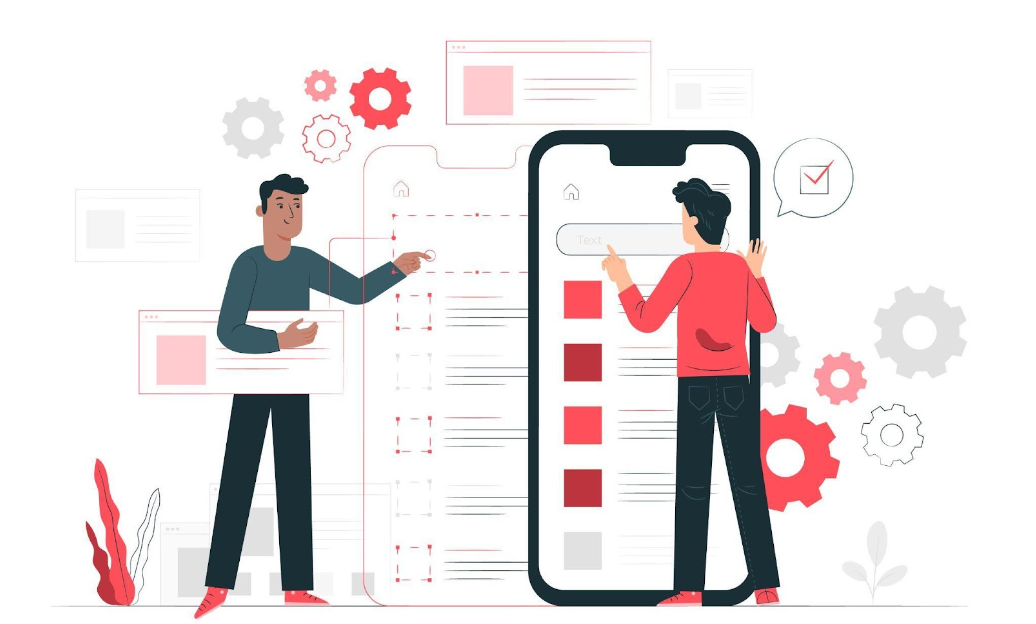Cell phones have become so ingrained in our everyday lives that it’s hard to fathom contemporary existence without them. Not every one of the millions of applications is worth your time.
The ultimate aim of every user experience designer should be to create a revolutionary product that customers can’t help but purchase. A user experience designer is responsible for the overall look and feel of a product, its functionality, and its branding and marketing. 88% of users are less likely to return after a bad user experience.
Table of Contents
What is mobile UX design?
“Mobile UX design” seeks to provide electronic device user interfaces that are easy to understand and use on the move. By creating solutions, often applications, designers cater to the unique constraints mobile users face. Designers put an emphasis on discoverability, accessibility, and efficiency to provide the greatest mobile engagement possible.
Determining the importance of something is the next step. Given the skyrocketing growth in the use and acceptance of mobile devices, the significance of mobile user experience cannot be emphasized enough. Reasons for this can include its ease of use, speed, and effectiveness in comparison to more traditional laptops and desktops.
15 best mobile design practices for UX design
1. Experience for users made easier
Having distinctive information or features is useless if they cannot be easily located, hence making navigation easy is of utmost importance. Make sure all the features that are easy for users to navigate are available. Make smart use of the available space on the screen by including a menu system into the design.
2. Analysis of user behaviour
The most important things should preferably happen on one screen, such as logging in, configuring settings, choosing an item, confirming the action, etc. Take advantage of contrasting colours and shapes for optimal clarity in mobile app development. Do not let any supporting performers steal the show from the primary ones.
3. Appealing to consumers
Every time a user interacts with your software, reassure them by providing feedback. Spread the word on where things stand and what to expect from each procedure . Notify users of any potential delays using a progress bar and a message, or notify them when the form is complete with a pop-up message.
4. Minimizing processes
Avoid introducing superfluous steps that will make the user’s journey via your mobile app more difficult. Reduce the number of steps required to complete an activity to make it easier. To do this, we may eliminate log forms, make the program more auto-fill-friendly, and provide one-click capability.
5. Making UI improvements
Getting things done quickly is critical for users. Therefore, anything that slows them down should be removed. Get rid of anything that isn’t necessary for the user interface. Identify the essentials and get help from a mobile app development companyl.
6. Making adjustments to the program based on the user’s skill level
Make sure your app is compatible with the user’s mobile platform knowledge, experience, and aptitude by adjusting the onboarding process. New users may better understand your software’s capabilities after seeing a tutorial that walks them through the process. Take advantage of gesture based interactions while onboarding new users for mobile app development.
7. Offering a chance for personalization
Improve your data use for a more customized user experience. Make tailored recommendations through mobile app development services based on a user’s geographic location, search terms, and past purchases. Send your customers highly customized experiences with push notifications.
8. Lessening the data input required
If your software requests too much personal information, users may remove it. Showing respect for your users’ privacy may be achieved by streamlining forms to only need necessary inputs, offering the option to skip optional procedures, and consistently clarifying the necessity for particular information.
9. Embracing familiarity
Make things easier for users to pick up by sticking to tried-and-true styles and icons. There has to be a clear indication of what each part does. Use an envelope symbol, for example, to indicate that you are sending a message.
10. Assisting consumers
Help must be given to the user whenever they get stuck. Users may seek assistance with your app through live chats and chatbots, in-app native FAQs, and click-to-call customer care buttons.
11. Ensure crystal-clear picture contrast
Use high-contrast images and avoid gradients if you want your app to appear well in all lights, especially on glossy screens.
12. Developing accessible
Tiny touch targets are still a pain for clumsy human fingers, regardless of how much larger smartphone displays become yearly. To prevent users from having problems pressing the right button, ensure that all interactive components are of the appropriate size when you develop your app.
For simplicity’s sake, it’s best to keep the button height between 42 and 72 pixels. A button size of 60 pixels is usually seen as optimal. Mobile users are 5 times more likely to abandon a task if a site isn’t mobile-optimized.
13. Make the elements that can be clicked stand out
Users will like it if key elements are large-sized and UI components are proportionate to their relevance. The primary action buttons, symbols, and hotspots must be prominently displayed to capture the user’s attention immediately. Make sure the clickable objects stand out using white space and padding.
14. Delightful diversions
Keep users engaged if an app task takes some time to complete. You may include engaging information or an interactive animation as a distraction. So that users can start up where they left off without losing data, your app should be able to function in the background while they wait.
15. Assist the user with tactile feedback
You may do more in less time if the app is easier to use by making simple touch-based tasks appear more natural. Using haptics, you can make your app think an action has been started before it has even started processing it.
Conclusion
The sheer amount of moving parts makes it seem impossible to design an app from the ground up that meets all of your functional and aesthetic requirements. But, among the best techniques to wow your audience is the user experience design concepts discussed earlier. Following these rules will help you in mobile app development that will appeal to your target audience.











